Junkyard Find: 1948 Dodge Custom Sedan

For a few years after the end of World War II, Detroit's automakers sold mildly facelifted prewar designs while they made the switch back to peacetime production. Chrysler managed the feat for the 1949 model year; we admired a Plymouth Special Deluxe sedan from that year in a Colorado car graveyard last summer, and today we're going to take a look at an example of one of the last of the stopgap postwar Chrysler products: this '48 Dodge in a yard just south of Denver.
The 1946-1948 Dodges and Plymouths (and DeSotos) were mechanically nearly identical, but it was easy to tell them apart at a glance.
The Dodge of that period got this imposing slab of a rectangular grille and front fenders that extended into the front doors, while its cheaper Plymouth sibling got a more understated grille and shorter fenders.
The '48 Dodge looked old-fashioned in its day, and so I shot this photograph with an Ansco Memo camera (which was made to shoot then-cheap 35mm movie film) from the late 1920s.
Colorado Auto & Parts recently cleared out a remote storage yard, placing better than 100 vintage cars and trucks from the 1940s through the 1970s in the regular U-Pull-It inventory. That includes nearly two dozen 1964-1973 Ford Mustangs and Mercury Cougars, plus some fascinating European machinery. Look for more of this treasure trove in future articles from me.
It's nearly impossible to tell 1946, 1947 and 1948 Dodges apart, but the body number of this one says it's an early-model-year '48, built at the plant in Hamtramck, Michigan.
The 1948 Dodge came in two trim levels: DeLuxe and Custom. The metal trim around the windows says this is a Custom, the more upscale of the two.
The MSRP of a 1948 Dodge Custom four-door sedan was $1,788, or about $23,062 in 2023 dollars. Its Plymouth Special Deluxe counterpart started at just $1,529 ($19,722 after inflation).
This one has some pricey options, including an AM radio and a heater. Yes, heaters were considered frivolous luxuries by many buyers of affordable cars in the 1940s. Just wear warmer clothes for that drive across North Dakota in January!
Chrysler was still putting flathead engines in all of its North American-market cars and trucks in 1948. The overhead-valve Hemi V8 didn't show up until the 1951 model year (and didn't find its way into Dodge cars until 1954), and the overhead-valve Slant-6 didn't replace the flathead six in cars until the 1960 model year.
High-end Chrysler-badged models got straight-eight flatheads at this time, but 1948 Dodges got a 230-cubic-inch (3.8-liter) flathead six rated at 102 horsepower; the '48 Plymouths received the 217-cubic-inch (3.6-liter) version with 95 horses. This car's engine might be the original one, but swaps happened frequently with these cars.
Starting with the 1947 model year, Dodge cars got Chrysler's "Fluid Drive" transmission as standard equipment. This was a three-on-the-tree manual with a fluid coupling that required less use of the clutch pedal and fewer shifts. It wasn't an automatic, but it added a layer of idiot-proofing to the ordinary manual.
This car spent too many decades sitting outdoors to be worth restoring, especially given the relatively low value of immediate-postwar four-door sedans.
Some of its parts are in good enough condition to live on in other cars. I've already grabbed a few bits for my 1941 Plymouth project.
[Images: The author]
Become a TTAC insider. Get the latest news, features, TTAC takes, and everything else that gets to the truth about cars first by subscribing to our newsletter.

Murilee Martin is the pen name of Phil Greden, a writer who has lived in Minnesota, California, Georgia and (now) Colorado. He has toiled at copywriting, technical writing, junkmail writing, fiction writing and now automotive writing. He has owned many terrible vehicles and some good ones. He spends a great deal of time in self-service junkyards. These days, he writes for publications including Autoweek, Autoblog, Hagerty, The Truth About Cars and Capital One.
More by Murilee Martin
Latest Car Reviews
Read moreLatest Product Reviews
Read moreRecent Comments
- Varezhka I have still yet to see a Malibu on the road that didn't have a rental sticker. So yeah, GM probably lost money on every one they sold but kept it to boost their CAFE numbers.I'm personally happy that I no longer have to dread being "upgraded" to a Maxima or a Malibu anymore. And thankfully Altima is also on its way out.
- Tassos Under incompetent, affirmative action hire Mary Barra, GM has been shooting itself in the foot on a daily basis.Whether the Malibu cancellation has been one of these shootings is NOT obvious at all.GM should be run as a PROFITABLE BUSINESS and NOT as an outfit that satisfies everybody and his mother in law's pet preferences.IF the Malibu was UNPROFITABLE, it SHOULD be canceled.More generally, if its SEGMENT is Unprofitable, and HALF the makers cancel their midsize sedans, not only will it lead to the SURVIVAL OF THE FITTEST ones, but the survivors will obviously be more profitable if the LOSERS were kept being produced and the SMALL PIE of midsize sedans would yield slim pickings for every participant.SO NO, I APPROVE of the demise of the unprofitable Malibu, and hope Nissan does the same to the Altima, Hyundai with the SOnata, Mazda with the Mazda 6, and as many others as it takes to make the REMAINING players, like the Excellent, sporty Accord and the Bulletproof Reliable, cheap to maintain CAMRY, more profitable and affordable.
- GregLocock Car companies can only really sell cars that people who are new car buyers will pay a profitable price for. As it turns out fewer and fewer new car buyers want sedans. Large sedans can be nice to drive, certainly, but the number of new car buyers (the only ones that matter in this discussion) are prepared to sacrifice steering and handling for more obvious things like passenger and cargo space, or even some attempt at off roading. We know US new car buyers don't really care about handling because they fell for FWD in large cars.
- Slavuta Why is everybody sweating? Like sedans? - go buy one. Better - 2. Let CRV/RAV rust on the dealer lot. I have 3 sedans on the driveway. My neighbor - 2. Neighbors on each of our other side - 8 SUVs.
- Theflyersfan With sedans, especially, I wonder how many of those sales are to rental fleets. With the exception of the Civic and Accord, there are still rows of sedans mixed in with the RAV4s at every airport rental lot. I doubt the breakdown in sales is publicly published, so who knows... GM isn't out of the sedan business - Cadillac exists and I can't believe I'm typing this but they are actually decent - and I think they are making a huge mistake, especially if there's an extended oil price hike (cough...Iran...cough) and people want smaller and hybrids. But if one is only tied to the quarterly shareholder reports and not trends and the big picture, bad decisions like this get made.



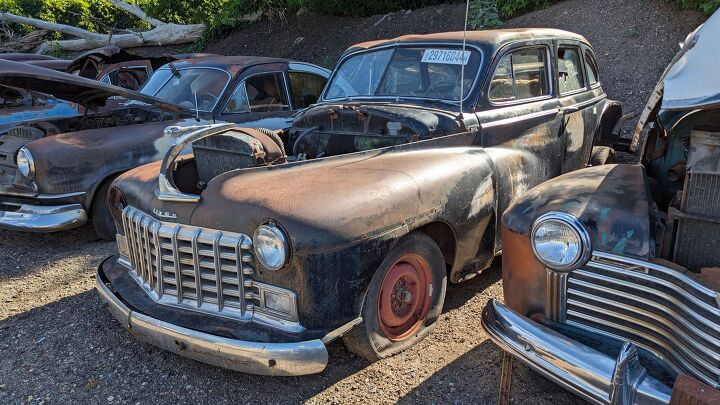



























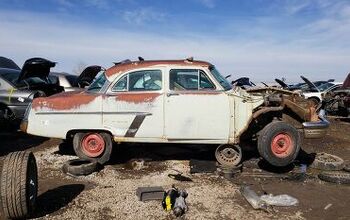
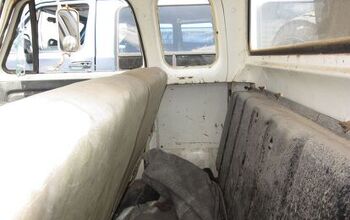
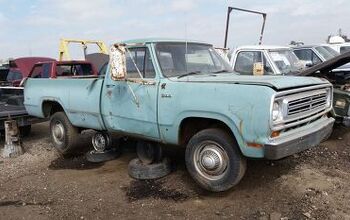
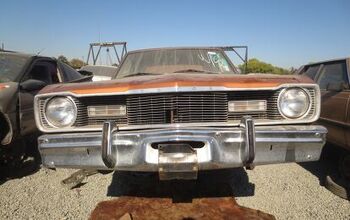











Comments
Join the conversation
Given that huge domed hood, you would expect the engine to be big, but it was for the huge radiator! Flathead engines had a tendency to run hot, with the intake/exhaust valves inside the engine block.
One advantage was that the flathead would run on lower octane and iffy gasoline, common in Europe in WW2. My uncle said the Dodges kept running in WW2, while the OHV GM trucks needed a lot of maintenance.
My uncle said he was an expert, because he was army infantry and would hop on any moving vehicle to avoid walking. He hopped on a GM truck that broke down and he had to help push it several miles. It was Ford or Chrysler products after that.
Brings back some memories. My dad bought a 1948 Dodge new. I remember picking it up at the dealership as a little kid. I remember one time he tried to get it up to 100 on a new highway. Pretty scary. I remember that it had fluid drive, but I never drove it. Kept it until 1956 when it was replaced by a new "forward look" Dodge, which is the car I learned to drive on.